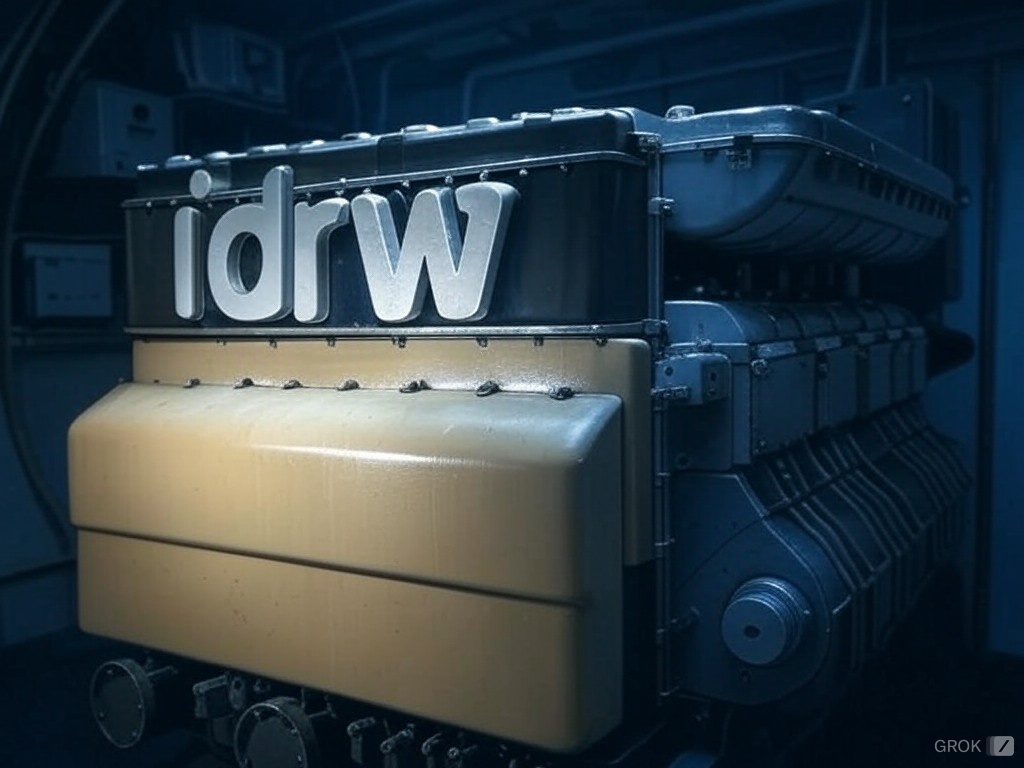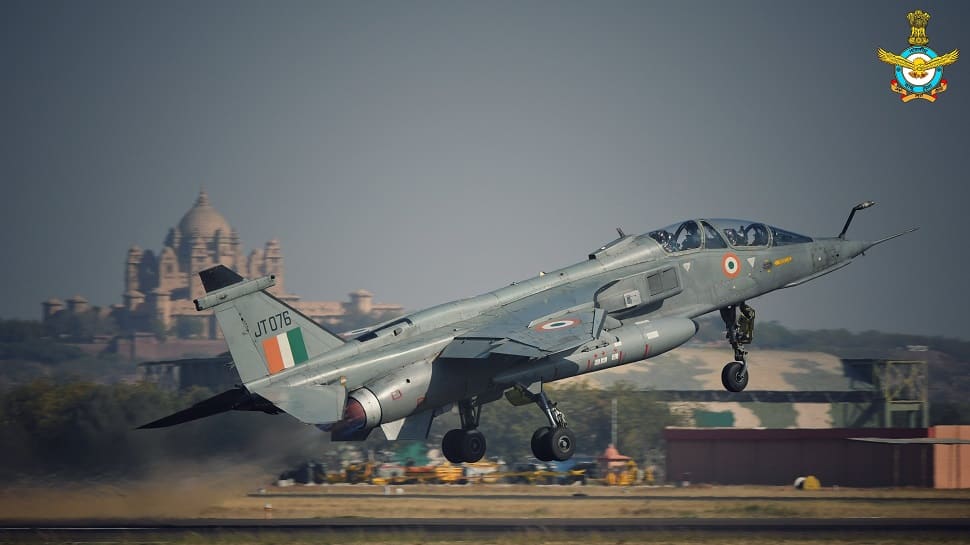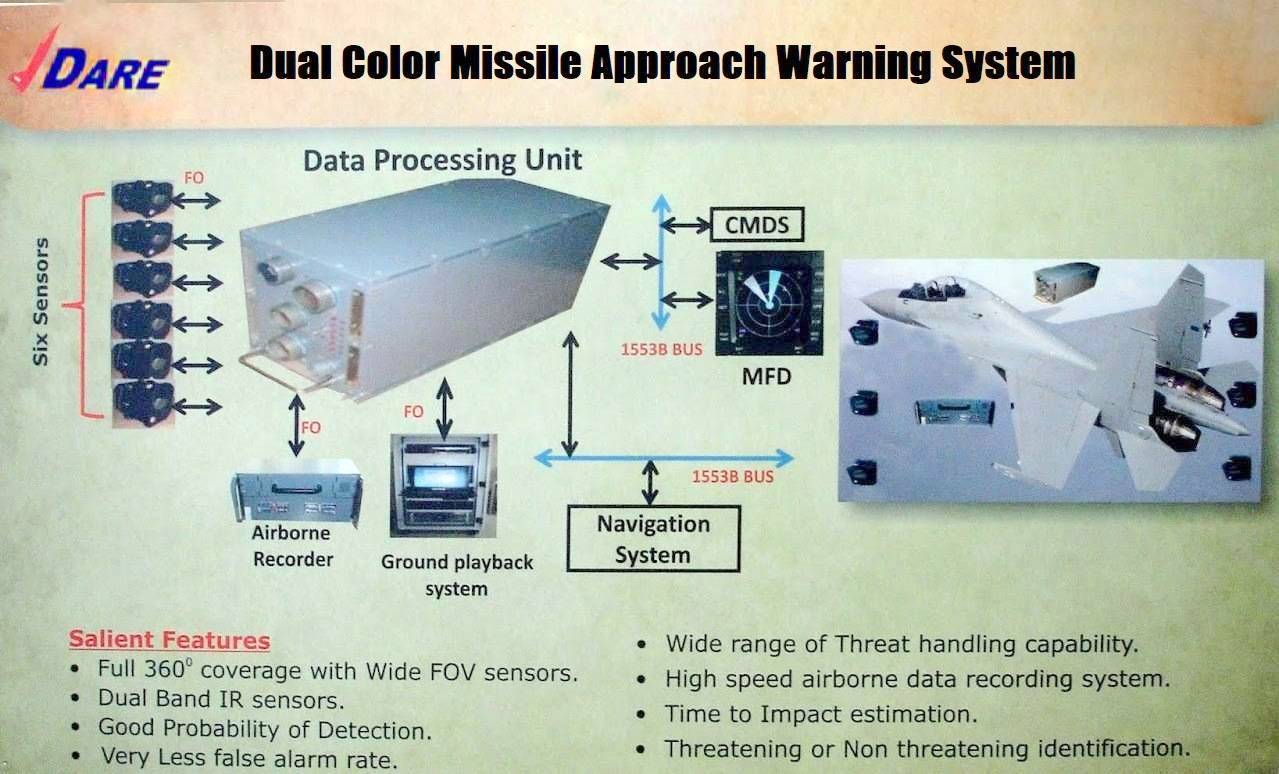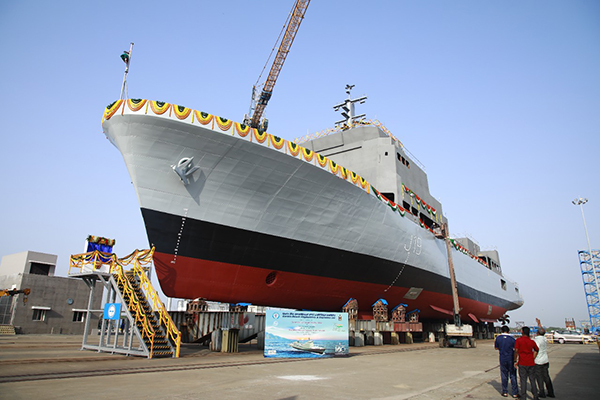SOURCE: AFI


Midhani, a premier materials research and development organization, has once again pushed the boundaries of materials science with the development of SN-41, a remarkable nickel-based precipitation hardening alloy. This superalloy boasts exceptional properties, making it a game-changer in various high-temperature and high-stress applications.
The robust properties of SN-41 make it an ideal choice for industries demanding high-performance materials. Its exceptional resistance to combustion gases, coupled with its superior strength and oxidation resistance, positions it as a crucial material for jet engine components.
Continue readingSOURCE: AFI


A groundbreaking algorithm developed by Rishabh Bhattacharya, a third-year engineering student at the International Institute of Information Technology, Hyderabad (IIITH), has caught the attention of the Indian Navy. This innovative solution, aimed at detecting and tracking flying objects such as helicopters, aeroplanes, drones, UAVs, and birds, could soon become an integral part of naval operations.
Rishabh’s algorithm was showcased at a nationwide competition hosted by the Indian Navy under the banner of “Swavalamban 2024,” an event dedicated to fostering innovation and self-reliance in defense technology. His work not only won him the first prize but also a cash award of Rs 3 lakh.
Continue readingSOURCE: AFI


India’s defence maintenance, repair, and overhaul (MRO) sector is on the verge of a significant transformation, driven by strategic partnerships between global aerospace giants and domestic firms. Over the next five years, the sector is set to establish itself as a regional hub for military aviation maintenance, supported by policy reforms, a maturing industrial ecosystem, and an increasing reliance on indigenous capabilities.
The partnerships between global leaders like Lockheed Martin and Boeing with Indian companies such as Tata Advanced Systems Ltd (TASL) and AI Engineering Services Ltd (AIESL) are pivotal. These collaborations aim to create state-of-the-art MRO facilities that cater to both domestic and regional needs. The focus is not just on servicing Indian defence platforms but also on attracting international clients from the Asia-Pacific and Middle East regions, leveraging India’s cost-effectiveness and skilled workforce.
Continue readingSOURCE: RAUNAK KUNDE / NEWS BEAT / IDRW.ORG


India’s ambitious Project-76 aims to develop a new class of diesel-electric attack submarines for the Indian Navy, which will be crucial in bolstering the country’s undersea warfare capabilities. A key feature of this project is the focus on the local development of industrial diesel engines to power these submarines.
A private sector company that has already developed industrial diesel engines is currently in discussions with the Indian Navy to provide the engines required for Project-76 submarines. These engines are expected to deliver 1231-1300 kW of maximum power and weigh around 6 tons each. The submarines will need two such engines, which will primarily be used to recharge lithium-ion batteries while operating at snorkel depth.
Continue readingSOURCE: RAUNAK KUNDE / NEWS BEAT / IDRW.ORG


India’s Technology Development Fund (TDF) Scheme has unveiled an ambitious project to design and develop an indigenous Smart Multifunctional Display (MFD) for fighter aircraft. This initiative is a significant stride toward modernizing the avionics of India’s fighter fleet, enhancing operational capabilities, and achieving self-reliance in defence technology.
The current fighter aircraft fleet relies on outdated cockpit display systems that struggle to meet the demands of modern combat and reconnaissance missions. These legacy systems are limited in providing pilots with real-time, integrated access to critical mission and flight data. The planned Smart Multifunctional Display aims to bridge this gap by offering advanced capabilities tailored to modern operational requirements.
Continue readingSOURCE: RAUNAK KUNDE / NEWS BEAT / IDRW.ORG


The Indian Navy is set to enhance its maritime strike capabilities with the integration of the Naval Anti-Ship Missile Short Range (NASM-SR) developed by the Defence Research and Development Organisation (DRDO) into its upcoming fleet of 15 MQ-9B Sea Guardian UAVs.
According to reports from idrw.org, the initial plans to procure the anti-ship missile from General Atomics were abandoned to avoid delays in the delivery of the UAVs. Instead, the Navy will locally integrate the NASM-SR into the UAV systems, ensuring a more efficient and timely rollout of operational capabilities.
Continue readingSOURCE: AFI


Armoured Vehicles Nigam Limited’s (AVNL) Medak unit has marked a significant milestone in its production quality assurance by successfully conducting flotation trials for the Sarath Infantry Combat Vehicle. This event highlights the unit’s dedication to delivering top-tier military hardware, specifically designed to meet the rigorous demands of modern combat environments.
The trials, held at Ordnance Factory Medak, involved rigorous testing to verify the Sarath vehicle’s amphibious capabilities. The vehicle was observed navigating through water bodies, showcasing its ability to float and move effectively across water surfaces. This capability is vital for military operations where troops might need to cross rivers or other water obstacles without the need for bridges or ferries, thus maintaining the momentum of an advance or retreat.
Continue readingSOURCE: AFI


On November 29th and 30th, 2024, the Chinese and Russian air forces conducted joint patrols over the Sea of Japan and nearby regions. However, the operations did not go as planned, and the Japanese Self-Defense Forces (JSDF) exposed some startling inefficiencies in China’s military aviation capabilities. These events have underscored serious shortcomings in China’s military technology and strategy.
On the first day, a Chinese H-6N strategic bomber flew to the Sea of Japan to rendezvous with Russian forces. Typically, escort fighter jets accompany such missions for protection. However, China’s J-16 fighters escorting the bomber turned back after crossing the Tsushima Strait—about 900 kilometers from the Chinese mainland—leaving the bomber to continue alone.
Continue readingSOURCE: AFI


In a significant stride towards enhancing the operational capabilities of the Indian Army, Tata Advanced Systems Limited (TASL) has successfully delivered the first batch of 40 Tactical Access Switch (TAS) systems. This delivery is part of a larger contract to supply 100 systems, underlining TASL’s pivotal role in advancing India’s defence infrastructure.
The Tactical Access Switch is not just another piece of equipment; it’s a next-generation communication node designed to integrate and streamline voice, video, and data communications from the infantry level right up to Army Headquarters. This device is crucial for modern warfare, where real-time, reliable communication can mean the difference between success and failure on the battlefield.
Continue readingSOURCE: IDRW.ORG.


In a significant upgrade to the Indian Air Force’s (IAF) Su-30MKI fleet, the aircraft will soon be equipped with advanced radar warning systems and missile detection capabilities. This development addresses a critical gap in the aircraft’s defensive systems, as the Su-30MKI has lacked a Missile Approach Warning System (MAWS) until now. The Defense Research and Development Organisation (DRDO) has developed the Dual Colour Missile Approach Warning System (DC-MAWS), which will significantly enhance the survivability and situational awareness of the IAF’s frontline fighter jets.
The DC-MAWS is a cutting-edge system designed to operate in the mid-infrared (IR) spectrum, enabling precise identification of approaching missiles across generations. Its dual-color capability uses spectral data from two IR bands to efficiently differentiate missile threats from non-threatening sources such as sunlight reflections or background radiation. This dramatically reduces false alarms, ensuring pilots receive accurate and actionable warnings.
Continue readingSOURCE: IDRW.ORG.


The INS Chakra II, a Russian-made Akula-class nuclear-powered attack submarine that was leased to India for a period of ten years, has become the subject of speculation after its return to Russia in June 2021. Recent satellite imagery has revealed the submarine alongside Russia’s Oscar II-class submarine, the K-442 Chelyabinsk, at the naval base in Bolshoy Kamen, a town located in Russia’s Primorsky Krai. The sighting has raised questions about the future of the vessel, which was returned after a decade of service with the Indian Navy.
INS Chakra II, originally named K-322 Nerpa by the Russian Navy, was leased to India under a 10-year agreement that commenced in 2012. This Akula-class submarine, with its advanced stealth, speed, and firepower, was a valuable asset for the Indian Navy, adding significant operational capability to India’s underwater fleet. The lease agreement was part of India’s strategic relationship with Russia, aimed at enhancing the Navy’s nuclear-powered submarine capabilities.
Continue readingSOURCE: AFI


India has achieved another significant milestone in defense technology with the successful final experimental test of the Solid Fuel Ducted Ramjet (SFDR) propulsion-based missile system. Developed indigenously by the Defence Research and Development Organisation (DRDO), this cutting-edge technology is set to propel India’s capabilities in developing long-range air-to-air missiles.
The final test demonstrated the SFDR system’s flawless performance, achieving all mission objectives with precision. The test validated the missile’s propulsion system, guidance mechanism, and aerodynamic design under realistic conditions. The results confirm that the technology is now ready for integration into advanced missile systems, marking a major step toward self-reliance in high-performance missile technology.
Continue readingSOURCE: AFI


India, as a rising global power, faces complex geopolitical challenges that demand robust military capabilities. Major General S B Asthana, addressing the potential acquisition of Russia’s Su-57 stealth fighter, emphasized the necessity of state-of-the-art combat equipment for the Indian Armed Forces.
“For any country, an ideal composition of military equipment should include 30% state-of-the-art systems, 60% current-generation equipment, and only 10% obsolete inventory,” Maj Gen stated. This balanced approach ensures operational readiness while fostering technological upgrades.
Continue readingSOURCE: AFI


In a significant statement aimed at modernizing its aerial capabilities, Air Chief Marshal Hasan Mahmud Khan of the Bangladesh Air Force (BAF) has expressed the force’s commitment to upgrading its fleet. Addressing the media, he stated, “We’re devotedly trying to acquire multirole combat aircrafts and attack helicopters,” signaling a strategic shift towards enhancing both offensive and defensive air operations.
One of the key highlights of this modernization drive is the potential acquisition of the Chinese Chengdu J-10C multirole fighter aircraft. According to sources, the BAF is considering purchasing 16 J-10C jets in the first phase. This move is seen as a strategic effort to replace the aging F-7MB squadron, which has been a mainstay of the BAF’s fleet but is now nearing the end of its operational life.
Continue readingSOURCE: AFI


In a significant stride towards enhancing its maritime capabilities, the Indian Navy is poised to commission “INS Nirdeshak”, the second vessel of the Sandhayak-class survey ships, on December 18, 2024, in Visakhapatnam. This event marks another milestone in India’s push towards self-reliance in naval technology and operations.
The commissioning of INS Nirdeshak will take place at the Naval Dockyard in Visakhapatnam, under the aegis of the Eastern Naval Command. Union Minister of State for Defence, Sanjay Seth, is scheduled to preside over the ceremony, symbolizing the government’s commitment to bolstering naval strength. The event will also be attended by senior naval officers and representatives from Garden Reach Shipbuilders and Engineers (GRSE), the shipyard responsible for its construction.
Continue reading